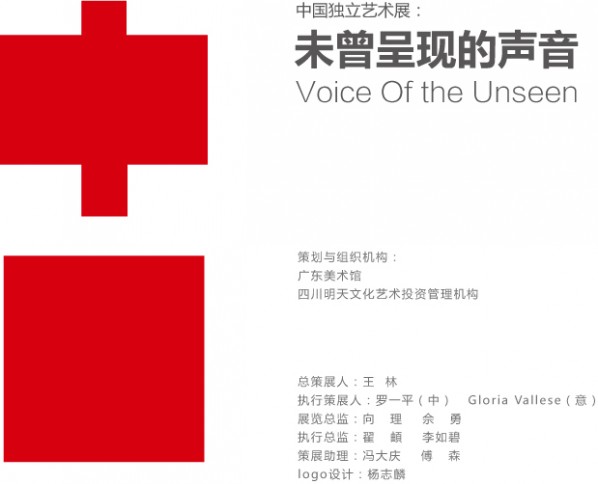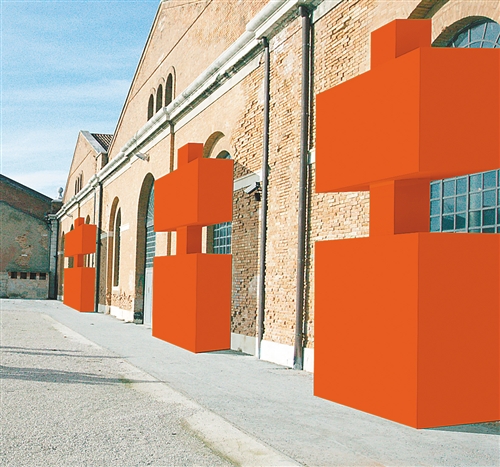
The 22nd section of the New Youth Art Salon of CAFA, entitled “Why Venice - International Appearance of Chinese Contemporary Art”, lectured by Wang Lin, Professor of Sichuan Fine Arts Institute, was held at the Red Chair Lecture Hall of the Building 7, CAFA, at 15:00, on March 30, 2013.
As the general curator of the large scale parallel exhibition “Voice of the Unseen: Chinese Independent Art Since 1979” of the Venice Biennale 2013, Wang Lin talked about the reason why he chose Venice Biennale as the international display of Chinese contemporary art.

About the installation and process
Compared to the theme pavilions and nation pavilions, parallel exhibitions actually open up a new mechanism: firstly, the organizers must be non-profit art institutions, the purpose was to keep a distance between the exhibition and the capital market; secondly, it required the direct application from a curator for free; thirdly, it must be an academic exhibition, a requirement for original artworks; fourthly, it should be held at the place identified by the Biennale Organizing Committee.
He said, after long and difficult negotiations, the exhibition was finally admitted to open in the armory of over 4000 square meters, opposite the main exhibition area, and it would be the largest among all the parallel exhibitions.
Subsequently, Wang introduced the process for the application of the parallel exhibition.
Firstly, the curator should submit an application to the Organizing Committee of the Venice Biennale to participate in the parallel exhibition, and the list of the artists, in November one year ago. In February, the Organizing Committee would inform on the results of those approved, if it was approved, the curator again declares the list of participating artists. In addition, if there was a small scale change to the artists, he could add the “artists of the lecture”, adding the artists participating in the academic lecture.
In addition, Wang said Western organizers pay more attention to intellectual property rights, especially their respective names and logos. Because the content of the parallel exhibition would be published in the catalog of the Venice Biennale, the Committee was very strict with the contents.

View of the Parallel exhibition “Voice of the Unseen", Image Courtesy of Chongqing Daily
<strong>Why choose Venice?
Wang Lin introduced three traditional channels for the international appearances of Chinese contemporary art: initially, after the reform and opening up of China, in the West, a number of independent curators appeared who were the earliest to pay attention to the change in Chinese art. Their selection of Chinese artists were more or less affected by the historical events of that time, often coming with a strong tendency for human rights. Wang pointed out, these curators often had the “Mao era episode”, and selected the artists with idealistic tendencies and against the capitalist system. So it was very easy to select the images challenging the Mao era or related to it. Secondly, after the 1990s, some overseas art institutions, such as galleries and foundations, began to collect the contemporary art of China. Thirdly, the official cultural industries promote contemporary art in recent years. Wang said that this form of international appearance was often influenced by ideology, been rigorous screened. Compared with the three forms above, it becomes an important topic as to how to independently present Chinese contemporary art. Wang said, rather than the situation of Chinese contemporary art, it seems that the West in more concerned with sensitive and controversial events. However, with the popularity of communication tools, culture and information in China became increasingly synchronized to the world. Today, China has become a place for collecting various problems in the world, collectively reflecting the widespread social conflicts, moral and cultural issues, environmental issues around the world.
Wang pointed out the core of contemporary art was the “problem”, the essence of the “conceptual” contemporary art was sensitive, revealing and challenging the issue.
Wang Lin summarized the purpose of organizing the parallel exhibition in two words: firstly, it is “autonomy”, Chinese artists participate in an exhibition of autonomy, folk, citizen, individual presentation of academic consciousness.
Secondly, it is the “authenticity”, to render the sophisticated look of Chinese contemporary art, Lin said, the only real thing was the opportunity for exchange, and the exhibition was not trying to launch a star or genre. Finally, Wang said he just wanted to express: “Art makes China no longer a threat to the world, please listen to the real sound from Chinese artists.”
In the Q & A session, Wang Lin answered questions from the audience, such as the relationship between different sections of the parallel show, what was contemporary art, and how young artists deal with the creation dilemmas, etc.
Text and image by Yu Ya/ CAFA ART INFO
Translated by Chen Peihua/CAFA ART INFO




























